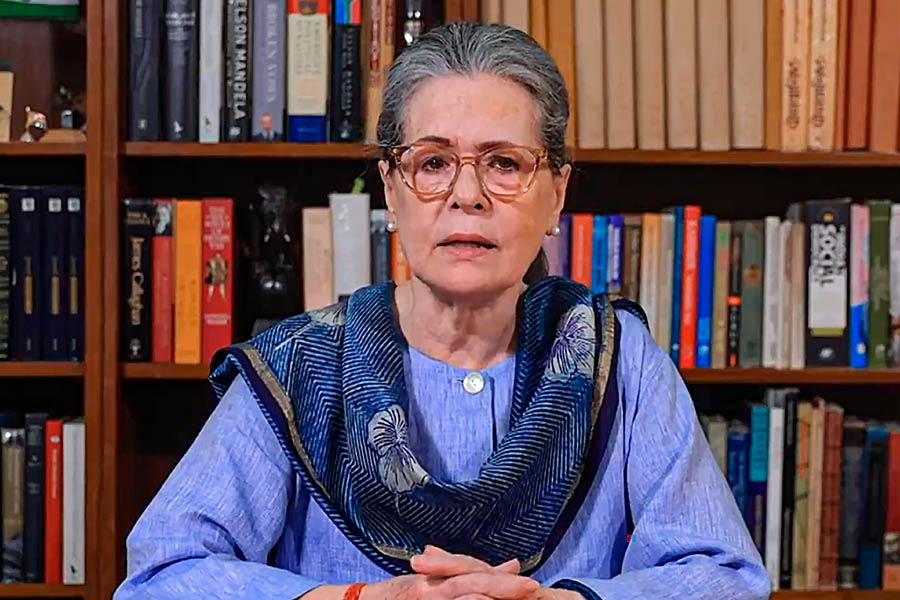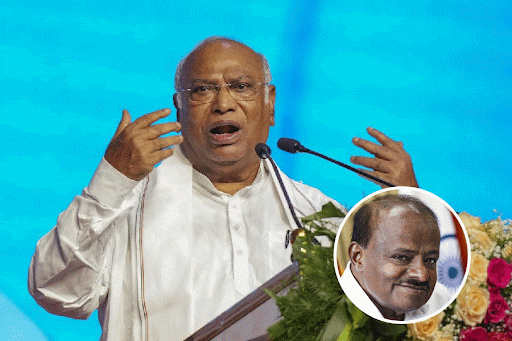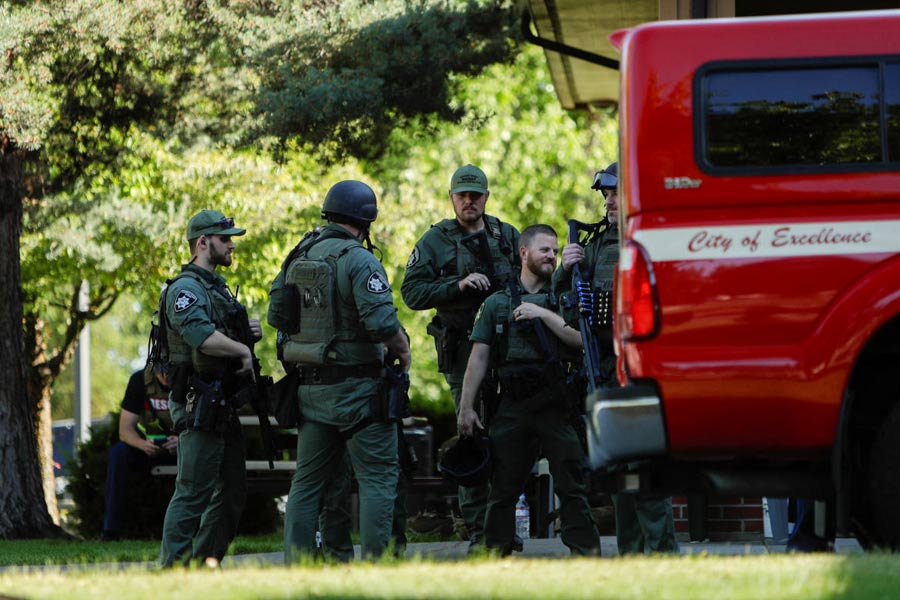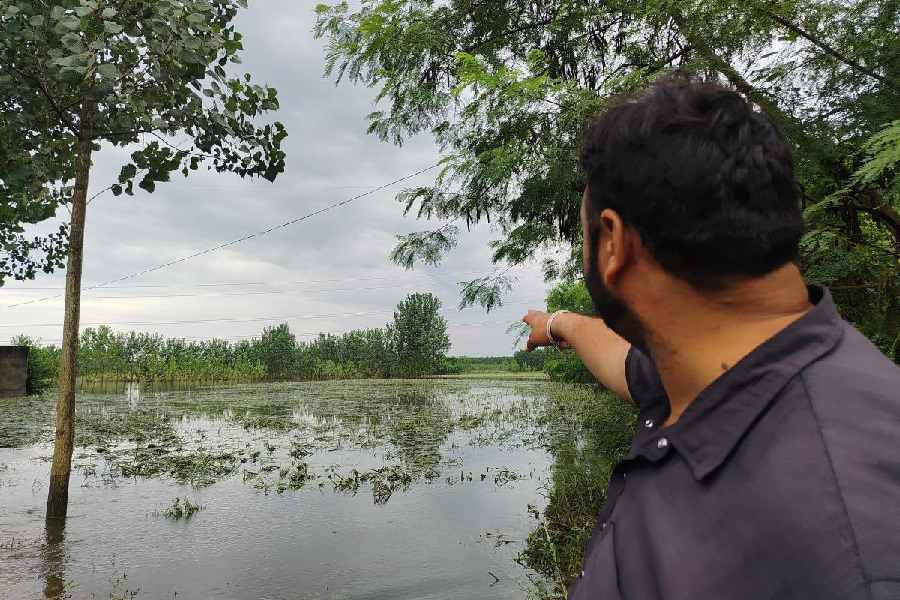 |
| ‘Let us be proud of being Indians and let Indianness be the integrating factor’. Picture by S.H. Patgiri |
The Indian nation is not a myth but a reality. Integrating it, therefore, is imperative — especially the peripheral communities living in the Northeast. Their varied cultures, customs and traditions must be made to merge into the wide panorama of Indian culture. The Northeast must be made to participate in nation-building and national activity. Only through participation can national integration be effective.
However, the biggest blow to national integration are the various secessionist movements which of late have assumed threatening proportions. There are rebel Nagas, Bodos, Tripuris, Meiteis and others — all clamouring for demands ranging from autonomy to separate state to independence. The separatist movement in Northeast India is a legacy of the British.
As far back as in 1946, when Clement Atlee, the then British Prime Minister, decided to wind up the British Indian empire and bifurcate India, Prof. Coupland of Cambridge University came up with a suggestion to trifurcate India with a Christian dominion in the country’s Northeast. Perhaps Prof. Coupland had a point because Partition of India was done on religious lines. His idea, however, did not fructify because the Khasis and Garos could not be provoked into rebellion. The Mizos did rebel much later in 1966 under Laldenga, but they decided to give up violence very soon. Now Mizoram is one of the most peaceful states in the country. In Aizawl, the capital of the state, one can now move around safely well beyond midnight. In Nagaland though, the seeds of separatism sowed by Prof. Coupland did germinate.
There are reasons. It is tempting to believe that Britain was responsible for causing the Naga problem. Sir Akbar Hydari, the then governor of Assam, had signed the nine-point Hydari Agreement of June 1947 as agent of the Indian Union.
Point number six of the agreement states: “... that the present administrative division should be modified so as to bring back into the Naga Hills district all the forests transferred to Sibsagar and Nowgong districts in the past and to bring back under the unified administrative unit as far as possible all the Nagas. All the areas so included would be within the scope of the present proposed agreement. No areas should be transferred out of the Naga Hills districts without the consent of the Naga National Council.”
It is surprising why the then British Indian government concluded this agreement only three months before Independence. The matter could have been left to the future Government of India. Thus, it would not be too far-fetched to think that the British just wanted to throw a spanner in the integration process of India. Sir Akbar Hydari was just a tool.
The late Sir Winston Churchill had predicted that India would break up in just 10 years. We proved him wrong. Again, the attitude of the British India government in allowing the proclamation of Naga Independence on August 14, 1947, a day prior to Independence is intriguing. Article 1 (1) of the Indian Independence Act, 1947, passed by the British Parliament says: “As from fifteenth day of August 1947 two independent dominions shall be set up in India to be known respectively as India and Pakistan.”
There was no provision for a third or fourth dominion. So no prince in India or Pakistan would dare announce independence. But the Naga rebels did. Based on this “Naga Independence”, Kaka D. Iralu appealed to the Nagas not to take part in illegal Indian elections. Of course, no one listened to Iralu and the majority of Nagas in Nagaland have been taking part in elections after elections.
When the Naga peace mission of 1966 with Jaya Prakash Narayan as leader and B.P. Chaliha and Rev. Michael Scott as members started work, Rev.Scott’s activities displayed anti-Indian designs. He had to be expelled from India as persona non grata. Rev. Scott was obviously an agent of British thought. Naga rebels got many sympathisers in London, Atlanta, Washington and Amsterdam.
The claim for creation of Nagalim (lim means land), comprising areas of Nagaland, Assam, Arunachal Pradesh and Manipur of India and some areas of Myanmar, by an insurgent outfit is creating problems in the national integration process. The present area of the state of Nagaland is 16,488 square km. The projected Nagalim has an area of 1,50,000 square km — almost ten times the present Nagaland. Moreover, it is not possible to achieve such a Nagalim unless there is a war with Myanmar and perhaps another war with India too. Therefore, would it not be better to abandon such an idea?
One also wishes that the ongoing peace talks between the NSCN (I-M) leaders and K. Padmanabhaiah, interlocutor of the Prime Minister, would bring peace to the troubled state of Nagaland. The level of talks must also be upgraded to the political one. The Government of India side may be led by a senior Union Cabinet minister. The talks for the past five years are only prolonging the agony. The longer the talks continue, the more the advantage to the rebels. The talks cannot be conclusive without political direction.
If one says the term Naga is a generic term (History of the frontier areas bordering Assam by Sir Robert Reid) for all tribes inhabiting the hill areas adjoining Assam, it is like people from north India calling all south Indians Madrasis or the Meiteis of Manipur terming all non-Meiteis — whether Bengali or Punjabi — as Mayangs. These are imaginary communities.
Pradeshwise identification is desirable for building a national spectrum. Thus all Nagas of Nagaland should be proud of being Nagas. Similarly, the Khasis and Garos should be proud of being Meghalayans as also the Daflas, Apatanis, Monpas and Mismis of Arunachal Pradesh should be proud of being Arunachalese.
When mankind started life on planet Earth, our forefathers used to live in jungles and caves. They used to live in a family or groups of families consisting of uncles, aunts, brothers, sisters, cousins and other kin. Naturally these extended families belonged to the same ethnic content and linguistic group. But they had a chief or patriarch. When such families got extended further, then a clan was formed. Several clans together made a tribe. Several tribes having similar ethnic groups, linguistic affinity, cultural identity and geographical contiguity formed a nation under a powerful ruler or king. Indeed, a very powerful king was required in the violent days of yore.
In a democracy, presidents and prime ministers are temporary. The permanent factors are national pride and strength. These must bind a nation together. National strength, pride, culture and ethos surpass the barriers of ethnicity and religion. An American, whether Alaskan or Californian, is proud of being an American. Likewise, the Japanese are proud of being Japanese and the Chinese of being Chinese. Let us also be proud of being Indians and let Indianness be the integrating factor.
lThe writer is a retired Lieutenant Colonel of the Indian armed forces










